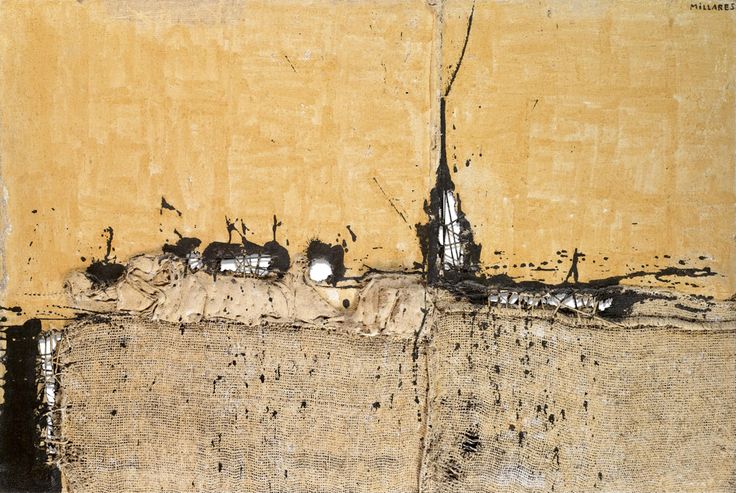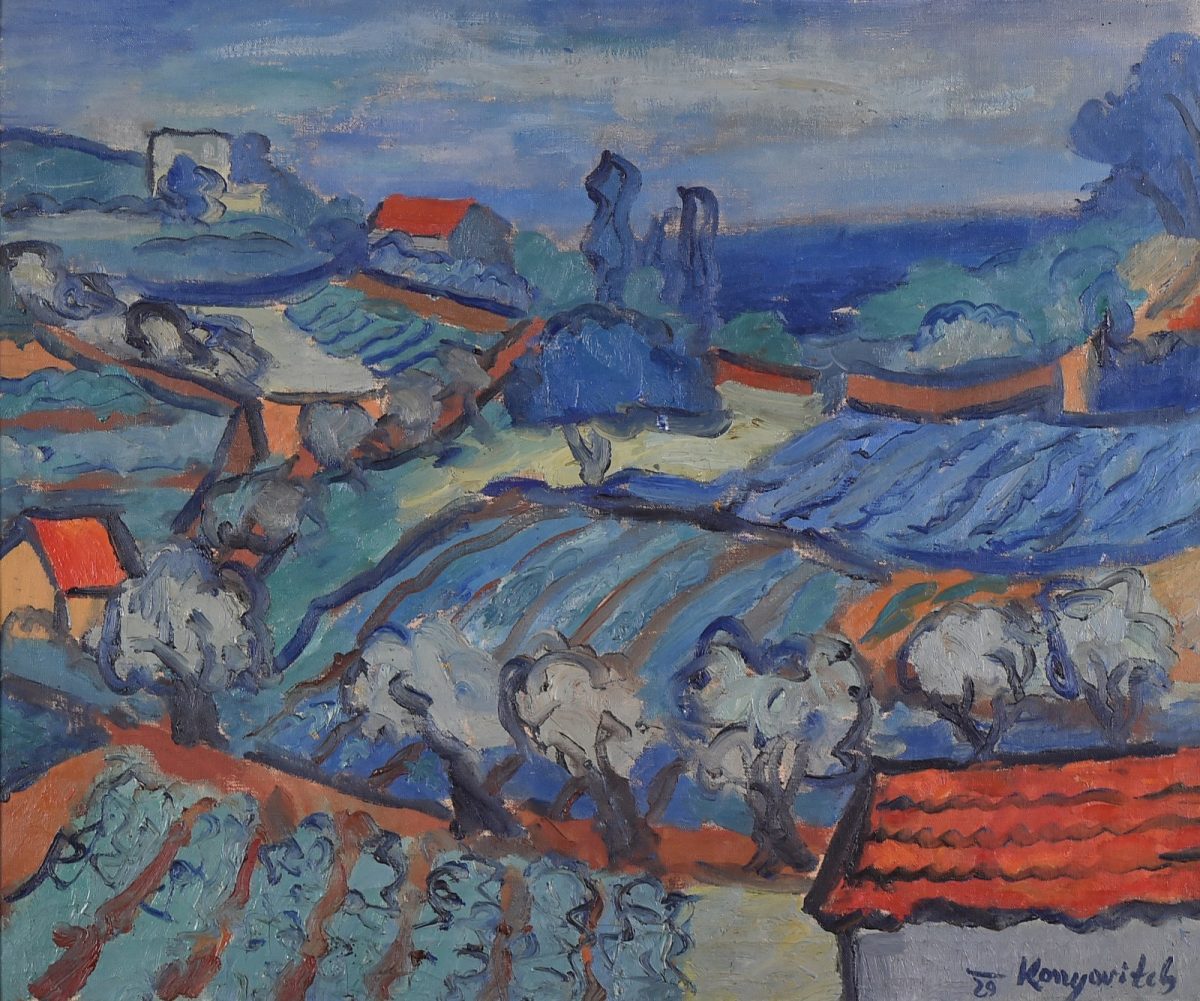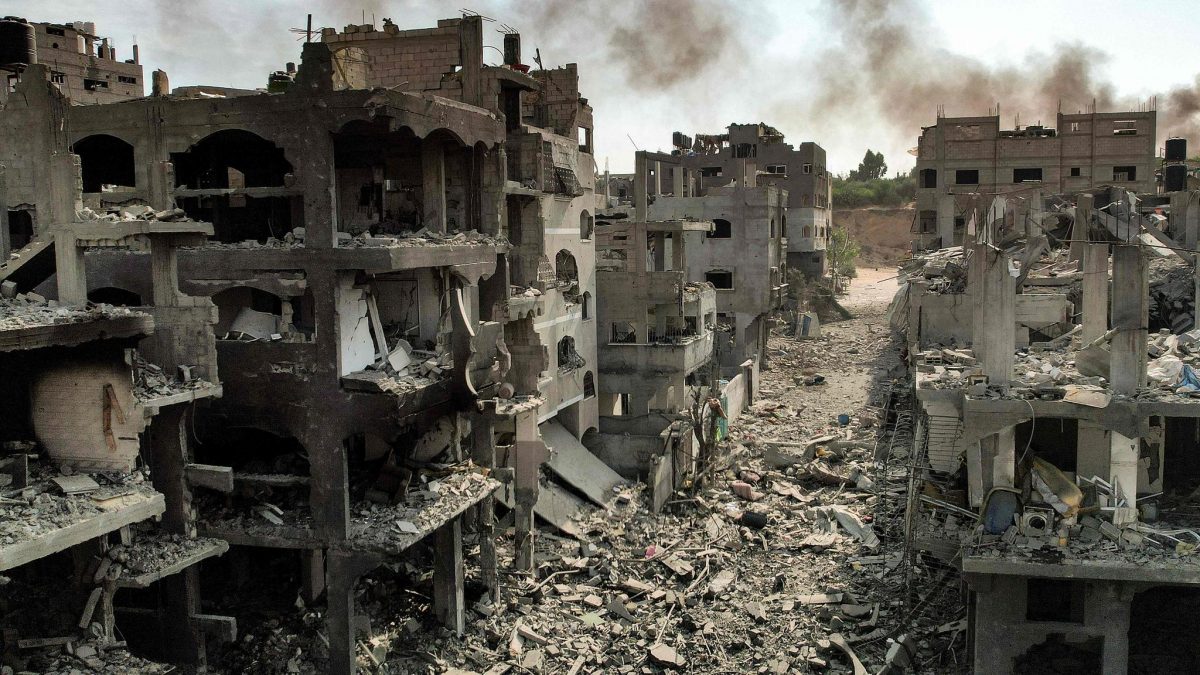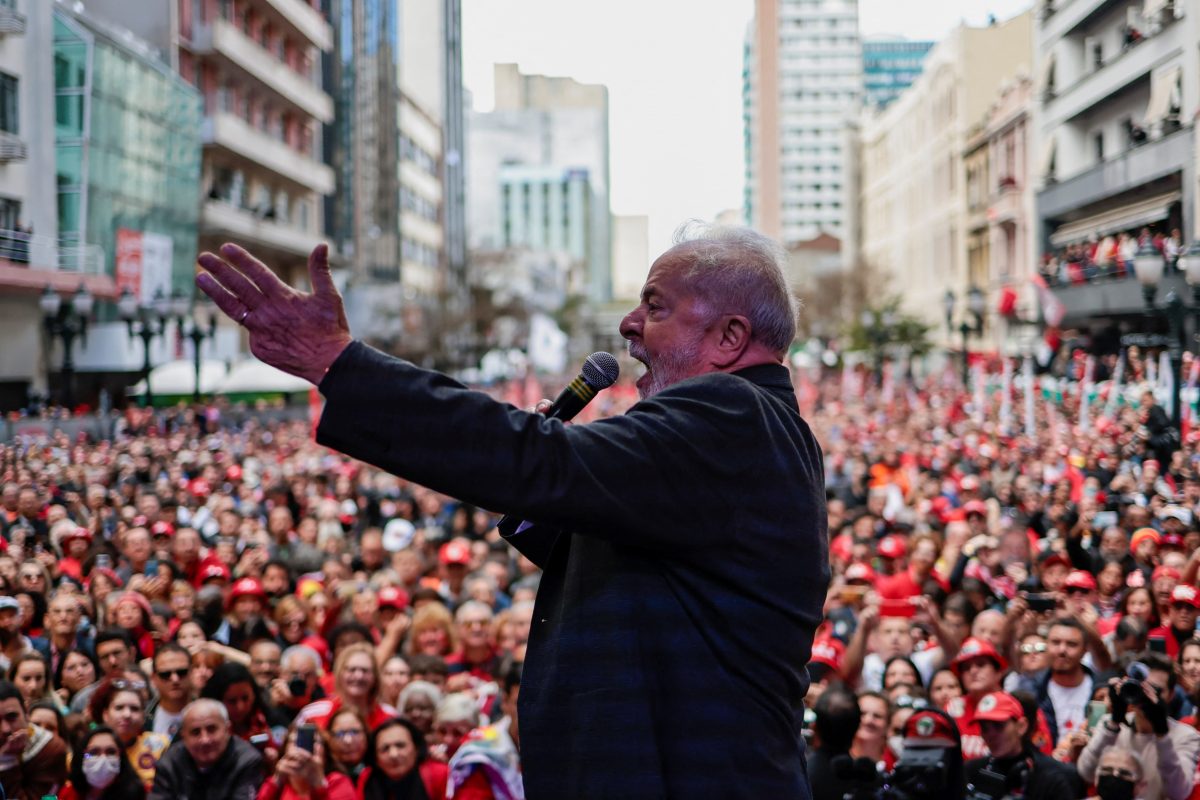One year after Luiz Inácio Lula da Silva’s return to power, it is possible to make a preliminary assessment of his governing strategy. After his election in October 2022, at the head of a heterogeneous coalition hoping to protect Brazilian democracy from Bolsonarismo, the president revived the classic Lulista approach: wholesale concessions to the bourgeoisie along with retail measures to benefit the masses. When he first assumed the presidency two decades ago, this combination of elite pacts and gradual reforms was both innovative and troubling. Lula refused to break with the neoliberal legacy of his predecessor, Fernando Henrique Cardoso, yet he fought to raise living standards for the impoverished majority: expanding cash transfers through the Bolsa Família programme, extending cheap credit and securing regular real-terms increases in the minimum wage. This social programme secured his 2007 reelection and took centre-stage in his 2022 campaign. Whether it can be sustained remains an open question.
From the outset, Lula’s ‘weak reformism’ was beset by a plethora of contradictions. To name just a few: gains in workers’ purchasing power were not accompanied by equivalent improvements in public healthcare, education, transport or security. Greater access to university degrees was not matched by decent employment opportunities. There was no coherent plan to stimulate domestic industry or shift away from raw material exports. Brazil’s decision to host the World Cup and the Olympics led to violent conflict and the displacement of communities. In the electoral sphere, however, weak reformism brought about a decisive realignment, with the poor supporting Lula’s Workers’ Party (PT) en masse, while the middle classes coalesced around Cardoso’s centre-right Brazilian Social Democracy Party (PSDB). This model led to four consecutive presidential election victories for the PT. At its peak, a Rooseveltian dream of change without conflict won many hearts and minds.
Yet dissatisfaction, at both popular and elite levels, began to build in the 2010s. Mass protests erupted in 2013 after an increase in public transport fares. There followed a wave of judicial activism against the government, the illegitimate impeachment of Lula’s successor Dilma Rousseff, and finally the imprisonment of Lula himself. Having ascended to the presidency through a congressional coup in 2016, Michel Temer launched his ultraliberal ‘Bridge to the Future’ plan, tearing up workers’ rights and pushing through austerity policies, including a constitutional cap on public spending. The next few years saw a return to the backwardness associated with the military dictatorship of the previous century. Temer and Bolsonaro buried the dream of social justice beneath the rubble of Lulismo. Poverty and homelessness soared. Societal regression was compounded by political atavism, with the army aspiring to run the state again. In the wake of this demolition, Lula was called back to rebuild from the ruins.
*
After winning by a narrow margin, Lula took office on 1 January 2023, promising ‘unity and reconstruction’. He did not set any specific goals for his administration. His speeches emphasized the general aims of healing society, overcoming the climate of hatred, fighting inequality and pulling the country out of its international isolation. Throughout his campaign, the contrast between the good times of Lulismo and the subsequent period of crisis was evoked. Future prospects were relegated to the background.
Once in power, ‘unity’ was sought primarily through dealmaking with capital and Congress, which remained dominated by conservative forces. Left-of-centre lawmakers rarely comprise more than 30% of the Chamber, so Lula has always sought to form alliances with parties across the political spectrum. Since 2018, however, the far right has established a significant presence in the legislature. The Liberal Party (PL), which now hosts Bolsonaro, is the largest in the House, having won 99 out of 513 seats in the last elections. The rise of radical conservatism followed the decline of both the PSDB, which had 70 seats in 2003 and has since sunk to 13, as well as that of the PT, which shrank from 91 to 68 over the same period. These shifts have reduced Lulismo’s room for manoeuvre. But this does not necessarily imply greater parliamentary pressure for an austere fiscal policy. In fact, the entire right-wing camp maintains its ties with the bourgeoisie by offering privileged access to public funds and resisting tax increases. Its survival is closely linked to the use of budgetary resources.
For Brazilian capital, however, austerity remains the top priority. Over the past year Lula has given his Finance Minister, Fernando Haddad, the role of granting concessions to big business. These include the government’s new ‘fiscal framework’, which we will analyse below, as well as its modernizing tax reforms – which will consolidate a range of federal, state and municipal taxes into a single Value Added Tax. This bill, which followed three decades of debate on the tax system, was approved by Congress on 15 December with only the far right voting against. Four days later, Standard and Poor’s upgraded the country’s rating on the international markets.
Lula has meanwhile devoted the months since his election to finding loopholes through which the needs of the people can be met. In December 2022, after circumventing pressure for immediate austerity measures by skilfully appointing Vice President Geraldo Alckmin to chair the presidential transition team, Lula managed to approve a R$145 billion uplift in the 2023 budget with the so-called ‘Transition Constitutional Amendment’. He thereby avoided cutting welfare schemes such as cash transfers and subsidies for medicines.
The canniness of this move lay in establishing a dialogue with Arthur Lira, the powerful Speaker of the House, who had been in charge of its so-called ‘secret budget’. This mechanism, formalized under Bolsonaro, gave the Speaker approximately R$20 billion to distribute among deputies – generally used to fund works in their constituencies – without the need for transparency. The Federal Supreme Court had ruled the practice unconstitutional, but Lula agreed to retain it informally on a case-by-case basis (to be negotiated with the executive), and pledged his support for Lira’s reelection as Speaker, in exchange for the approval of the Transition Constitutional Amendment. As a result, on the day he took office Lula was able to extend the Brazil Aid programme, and in March he launched Bolsa Família 2.0, with a minimum of R$600 per eligible household, to which he added R$150 in welfare payments per child up to the age of seven. He thereby repaid the loyalty of his subproletarian base and shielded himself from the precipitous fall in approval ratings that has weakened other progressive leaders in Latin America.
Yet among the concessions granted to Lira, the percentage of net current revenues earmarked for parliamentarians has now been raised from 1.2% to 2%, partly to compensate for the weakening of the secret budget. This reinforces the power of Congress, which has been growing ever since Speaker Eduardo Cunha orchestrated Dilma’s overthrow in 2016. During the reign of Cunha’s successor, Rodrigo Maia, there was talk of ‘informal parliamentarism’, which persisted with Bolsonaro’s support up until Lira was elected. In light of this, some commentators claim that the Brazilian political system has moved from hyper-presidentialist to semi-presidentialist. This trend further constricts Lula’s power, as his fiscal policy now faces pressure on two fronts – from a capitalist class demanding more austerity, and from the steady advance of conservative congressional power over the budget.
*
Lula’s fiscal framework, unveiled in March 2023, was the primary means of appeasing capital. Formulated by the Ministry of Finance, it was presented as a more flexible substitute for the spending ceiling that Temer had imposed seven years earlier. Given the absence of orthodox economists from Finance Minister Haddad’s team, the timidity of the plan probably stemmed not from any theoretical convictions, but from an agreement with the fractions of the capitalist class that reluctantly supported Lula in the 2022 run-off – the globalized financial sector in particular.
The overall effect of the framework is to put weak reformism into an even lower gear. Unlike the restrictions of the Temer era, which froze spending in real terms, it allows spending to grow as long as tax revenues expand as well. Yet the spending increase is limited to 70% of the gains in public revenue, and it must not exceed a maximum of 2.5% per year. By ensuring that spending grows at a slower pace than revenue, the rule enforces a gradual reduction in the size of the state, much like Temer’s infamous reform. As the economist Pedro Paulo Bastos has pointed out, the proposal is not even compatible with increasing the minimum wage to keep pace with GDP growth, or with maintaining the constitutional floors for education and health spending. The inherent contradictions of Lulismo were always destined to create problems in the long term, but now even the short term is under threat.
Lula’s attempts to mollify the investor class did not stop there. The executive also committed itself to the bold target of abolishing the primary deficit in 2024 and securing surpluses of 0.5% and 1% of GDP over the following two-year period. Given that the 2023 primary deficit is expected to exceed 1%, bringing it down to zero would require significant cuts – greater than those of Lula’s first term, which catalysed the establishment of PSOL as a left-wing challenger to the PT. The government claims that the plan is not to squeeze spending but rather to raise revenue, in part by taxing the rich. It has begun to take some positive steps in this direction: taxes on exclusive and offshore investment funds; reforms that give the executive more power in tax disputes with private companies; the Provisional Measure for Subsidies, which seeks to shore up the government’s tax collection capacity; and the review of so-called ‘tax expenditures’, mostly subsidies and tax benefits granted to specific sectors.
The passage of these measures has, however, meant granting further concessions to the conservative majority in the House, resulting in alliances with the Progressive Party (PP), a former bastion of the right that supported the military dictatorship, and the Republicans, an electoral vehicle created by the neo-Pentecostal Universal Church of the Kingdom of God, which is linked to Bolsonaro. In September, these parties were given the ministries for Sports and Ports and Airports respectively, as well as other positions in the second tier of government. In theory, this means that Lula’s parliamentary bloc exceeds the quorum of three-fifths needed to pass constitutional amendments. Without that number, there is thought to be a constant risk of congressional mutiny against the president. But, in reality, thanks to the changeable and amorphous nature of the parties, the deal is no guarantee of stability. The relationship between the presidency and the House will still be characterized by tit-for-tat negotiations which could break down at any moment.
The parts of the fiscal framework that seek to change Brazil’s regressive tax system are welcome. And reducing the deficit by increasing taxes on the rich tends to be less harmful to growth than cutting spending. Yet the cap on spending increases means that this programme will at best reduce austerity without repealing it. The 2.5% limit represents a hard brake on progress that did not exist in previous Lula administrations. In the first and second Lula terms the federal spending growth rate was 7.2% per year. Between 2003 and 2010, primary spending as a proportion of GDP increased from around 15% to 18%, creating the conditions for dispensing the Bolsa Família and raising the real-terms minimum wage by 66%. Similarly, during both Cardoso’s second term and Dilma’s first, spending grew twice as fast as permitted by the framework. According to one counterfactual study, if the new rules had been adopted in 2003, government spending would not have increased, but fallen to 11% of GDP. The constraints are now so tight that the popular strata cannot move forward. This is Lulismo in slow motion.
One might argue that Brazil’s 3% GDP growth in 2023 contradicts the idea of a squeeze. But we are not yet living under the restrictive effects of the new fiscal framework. The recent economic acceleration was partly due to the spending from 2022 – the result of Bolsonaro’s use of the budget as an electoral tool – as well as the Transition Constitutional Amendment and the agrarian bonanza brought about by a record harvest in 2022-23. The proposed fiscal regime will bring this growth spurt to an end. Lula is well aware of this, which is why he has begun to speak of loosening the fiscal straitjacket. At the end of October he asserted that the deficit for the coming year ‘doesn’t have to be zero’. Almost immediately, the stock market fell and the dollar rose. Capital demanded a commitment to austerity and, for the time being, the government has given in, keeping the current target in place. Yet the dispute continues, with the PT recently ratcheting up its criticism of austerity. It remains possible that the stringent targets will be eased over the coming months. But will this be enough?
*
To put Lula’s programme in perspective, it is worth comparing it to the administration of Andrés Manuel López Obrador in Mexico, who took office in late 2018. AMLO is generally associated with the centre-left, despite what is seen as his populist persona and his dubious approach to Covid-19. His agenda combines fiscal restraint with income redistribution, and has so far proved hugely popular with the working masses. Forecasts suggest that his successor is on track to win this year’s election comfortably. The president has pursued what he calls ‘republican austerity’, which seeks to restrict the private control of public resources while increasing taxation on the richest. There are obvious similarities with Haddad’s crusade against patrimonialism and his tax proposals. Yet AMLO governs with a flexibility that would be impossible under the Brazilian framework. The first year of his mandate was marked by expansionary fiscal policy, which intensified when the pandemic struck in 2020.
The next three years saw an overall contraction of public spending, yet this headline figure obscures important changes in the allocation of funds. Mexico’s traditional cash transfer programme, Progresa, was always viewed with suspicion by many on the country’s margins due to its strict conditions and eligibility criteria. Under AMLO, it has been replaced with universal transfer programmes increasing the number of beneficiaries. At the same time, his government has significantly raised the minimum wage and reinforced labour rights – financing these measures through cuts to the civil service. Whatever the shortcomings of AMLO’s programme, it has kept the Mexican economy growing at over 3% a year since 2021, which has contributed to his persistent popularity. His republican austerity is, from a macroeconomic point of view, far less austere than what is now being proposed for Brazil. It is more evocative of the original Lulism than of its pinched revival.
Lula may not enjoy AMLO’s approval ratings, which have stayed consistently above 60%, but he has still fared better than many of his other Latin American counterparts. Chile’s Gabriel Boric saw his ratings fall by 22% during his first year in office, while Colombia’s Gustavo Petro suffered a 23% drop over the same period. By contrast, Lula’s support has declined by just 11%: from 49% at the start of his term to 38% last month. Though he presides over a bitterly polarized nation, he has managed to retain a significant popular base, albeit one that is diminished compared to December 2003 and December 2007. Yet this relative stability will soon be threatened once, as is widely predicted, Brazil’s economy begins to falter under the new restrictions.
*
The Planalto knows that the ‘feel good factor’ is crucial in election years. Ten months from now, the public mood will be reflected in municipal and mayoral elections across the country. Defeat in high-profile constituencies is sure to cast a pall over the beginning of the 2026 presidential election campaign. Hence the government’s recent steps towards altering the terms of the fiscal framework. Hence, too, the efforts of parliamentarians to secure their desired shares of the budget. In São Paulo, which often acts as an electoral barometer, the upcoming contest is on a knife-edge. The left-wing mayoral candidate, Guilherme Boulos, ran a strong campaign in 2020, and Lula won over the voters on the city limits in 2022. Yet the right may be effective in exploiting the conservative instincts of the metropolitan middle classes, usually decisive for the outcome of municipal elections. Here, as elsewhere, the fortunes of the economy will likely determine how they vote.
Global dynamics have introduced another note of uncertainty. Since the end of 2022, inflation in the US, the Eurozone and the UK has been falling – and interest rates should follow, reinforcing similar tendencies in Brazil. With any luck, this will allow global liquidity to recover and stimulate growth south of the equator. Yet rising geopolitical tension, volatile capital flows and extreme weather events will continue to disproportionately affect peripheral countries. Lula is attempting to reduce Brazil’s vulnerability to such external headwinds by finding new opportunities for development, especially those that don’t involve confrontation with the bourgeoisie. In the energy sector, for example, he has refused to block oil prospecting at the mouth of the Amazon River, even though this had officially been banned by the government’s own Institute for the Environment and Renewable Natural Resources. (This has sparked fierce criticism from environmentalists, and even from Climate Minister Marina Silva, who oversaw a 22% drop in deforestation in the Amazon last year and proposed a ceiling on oil production.)
There are also those banking on the possibility of aid from China, amid growing Sino-American rivalry. Lula has generally displayed an audacity in global affairs that he has lacked on the domestic front. His emphasis on foreign policy has been so great that voters have criticized his international travel as excessive (in 2023 he visited 24 countries and spent 62 days abroad). Overseas, he has tried to mediate between the Venezuelan government and opposition, revitalize relations with Cuba, and carve out an independent position on the wars between Russia and Ukraine and Hamas and Israel. In September, Lula assumed the rotating presidency of the G20, using his platform to denounce ‘the structural mistakes of neoliberalism’. The ultimate aim, it seems, is to signal that Brazil will not be automatically aligned with any great power – that it expects concessions from both the American and Chinese blocs, particularly when it comes to the country’s long-term goal: reindustrialization. Yet, on this front, progress remains glacial. All we know so far is that the Chinese have agreed to build an electric vehicle factory in Bahia after Ford pulled out.
Of course, it is unlikely that any external strategy will have enough heft to move a continental nation like Brazil. This opens a window of opportunity for the far right, which could exploit conditions of stasis to cast itself as the only genuine force for change. If Lula’s first and second terms created the illusion of painless progress, his third has all but removed social justice from the picture. Some onlookers argue that, given the present circumstances, the priority should be to save democracy and leave the rest for later. But democracy cannot be stabilized without structural transformation – which, under the emerging regime of decelerated Lulismo, is proving increasingly difficult to imagine.
Read on: André Singer, ‘Lula’s Return’, NLR 139.
An earlier version of this article was published in A Terra é Redonda.








